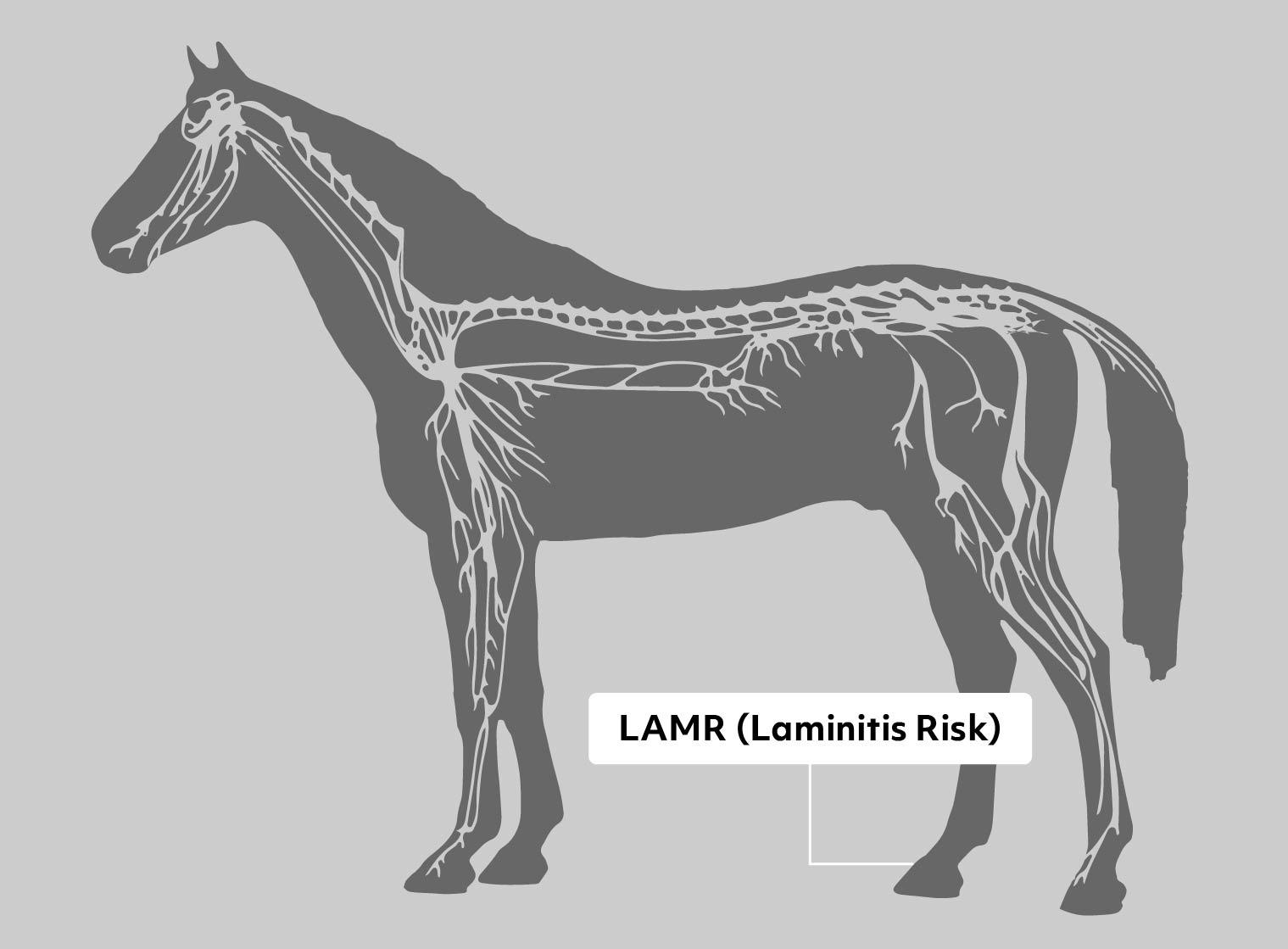Equine Metabolic Syndrome / Laminitis Risk (EMS / LAM)
Gene or Region: FAM174A
Reference Variant: T
Mutant Variant: C
Affected Breeds: Many
Research Confidence: Preliminary - Strong correlation in early studies, results have shown strong correlation in early studies of Arabian population
Explanation of Results: EMS/EMS = homozygous for Equine Metabolic Syndrome, at risk for EMS and increased risk for EMS-related Laminitis EMS/n= heterozygous for Equine Metabolic Syndrome, at risk for EMS and increased risk for EMS-related Laminitis n/n = no variant detected
General Description for Equine Metabolic Syndrome
Equine Metabolic Syndrome (EMS) is a wide-spread issue in the horse population. Primarily characterized by hyperinsulinemia (excess insulin circulating in the blood in relation to glucose levels), this metabolic disorder is often present in obese horses and ponies and can be challenging to diagnose as it can be misdiagnosed as "Cushing's" (a pituitary disfunction). Few treatments exist for EMS outside of diet management and exercise, which increases the need for early detection and prevention. Should obesity be allowed to set in, secondary chronic conditions, such as Laminitis can easily follow and further compromise the health of the horse. Breeders have also observed that horses with a tendency toward obesity (EMS) can also be difficult to manage in a reproductive environment (difficult to get in foal).
A genomewide association study (GWAS) using Arabian horses with a history of severe Laminitis secondary to EMS revealed significant genetic markers near a single candidate gene that may play a role in cholesterol homeostasis. This same genetic candidate correlated with a 9 time greater risk for Laminitis in horses with one or more variants that were also overweight/obese.
EMS Risk
-/- = n/n - No EMS variants detected. Normal risk for EMS and Laminitis +/- = EMS/n - One EMS variant detected. Horse is at risk for EMS and at increased risk for Laminitis +/+ = EMS/EMS - Two EMS variants detected. Horse is at risk for EMS and at increased risk for Laminitis (9 times greater risk than "normal" horses with no EMS variant)
EMS-Related Laminitis Risk
-/- = n/n - No EMS-LAM variants detected. Normal risk for EMS-related Laminitis +/- = EMS/n - One EMS-LAM variant detected. Horse is at increased risk for EMS-related Laminitis* +/+ = EMS/EMS - Two EMS-LAM variants detected. Horse is at increased risk for EMS - related Laminitis*
*9 times greater risk than "normal" horses with no EMS variant
References
Lewis, S. L., Holl, H.M, Streeter, C., Posbergh, C., Schanbacher, B. J., Place, N. J., Mallicote, M. F., Long, M. T., Brooks, S. A. (2017) Genomewide association study reveals a risk locus for equine metabolic syndrome in the Arabian horse. J Anim Sci 2017 Mar;95(2) 1071-1079
More Horse Health
Congenital Stationary Night Blindness 2
Congenital Stationary Night Blindness (CSNB) is an inherited disorder in horses characterized by an inability to see in low-light or dark conditions. This condition is present from birth and does not worsen over time. Common indicators include a horse’s reluctance to enter dark environments, difficulties in locating food and water in the dark, and a propensity for nighttime injuries.
Equine Arteritis Virus Resistance
Equine Arteritis Virus Resistance (EAVR) is an infectious disease with a broad range of symptoms, though most horses will not display any overt signs. Infection can result in abortion in pregnant mares, and some stallions persistently shed the virus through their semen.
